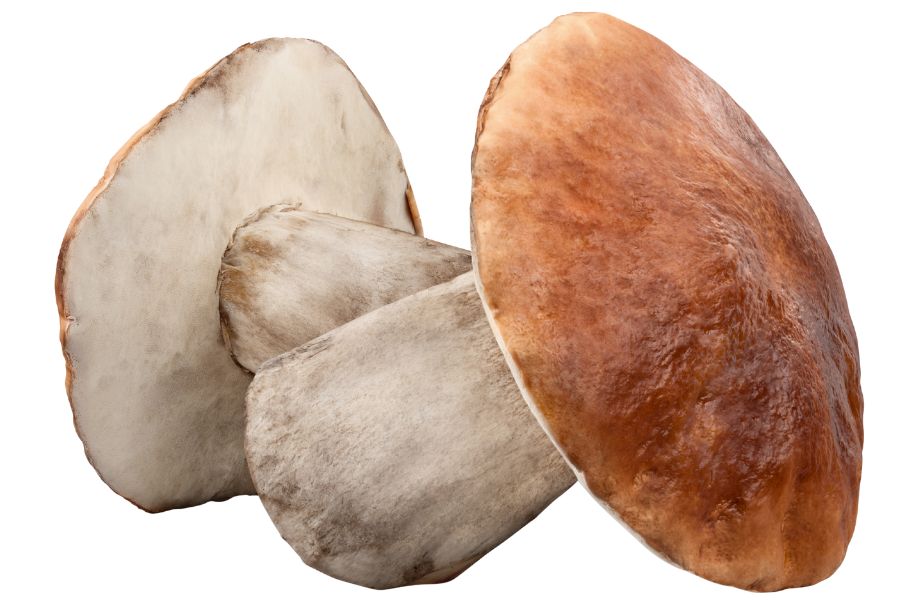There are valuable forageables scattered across Utah’s canyons, meadows, and alpine slopes. Morels come up when the conditions are just right, and a stand of serviceberry shrubs can provide enough fruit for a small feast.
Even the pricklypear cactus has edible pads and sweet, tart fruit if you handle it right.
Some of these plants thrive in the driest, most inhospitable-looking places. Arrowleaf balsamroot, for example, is both hardy and edible, with leaves and roots that have long been gathered in the region. Others like shaggy mane mushrooms show up for just a few days, then vanish as quickly as they came.
The more time you spend outside, the more you realize how much of Utah’s edible plant life flies under the radar. You don’t need a full guidebook to start, but you do need a sharp eye and a little curiosity.
What We Cover In This Article:
- What Makes Foreageables Valuable
- Foraging Mistakes That Cost You Big Bucks
- The Most Valuable Forageables in the State
- Where to Find Valuable Forageables in the State
- When to Forage for Maximum Value
- The extensive local experience and understanding of our team
- Input from multiple local foragers and foraging groups
- The accessibility of the various locations
- Safety and potential hazards when collecting
- Private and public locations
- A desire to include locations for both experienced foragers and those who are just starting out
Using these weights we think we’ve put together the best list out there for just about any forager to be successful!
A Quick Reminder
Before we get into the specifics about where and how to find these plants and mushrooms, we want to be clear that before ingesting any wild plant or mushroom, it should be identified with 100% certainty as edible by someone qualified and experienced in mushroom and plant identification, such as a professional mycologist or an expert forager. Misidentification can lead to serious illness or death.
All plants and mushrooms have the potential to cause severe adverse reactions in certain individuals, even death. If you are consuming wild foragables, it is crucial to cook them thoroughly and properly and only eat a small portion to test for personal tolerance. Some people may have allergies or sensitivities to specific mushrooms and plants, even if they are considered safe for others.
The information provided in this article is for general informational and educational purposes only. Foraging involves inherent risks.
What Makes Foreageables Valuable
Some wild plants, mushrooms, and natural ingredients can be surprisingly valuable. Whether you’re selling them or using them at home, their worth often comes down to a few key things:
The Scarcer the Plant, the Higher the Demand
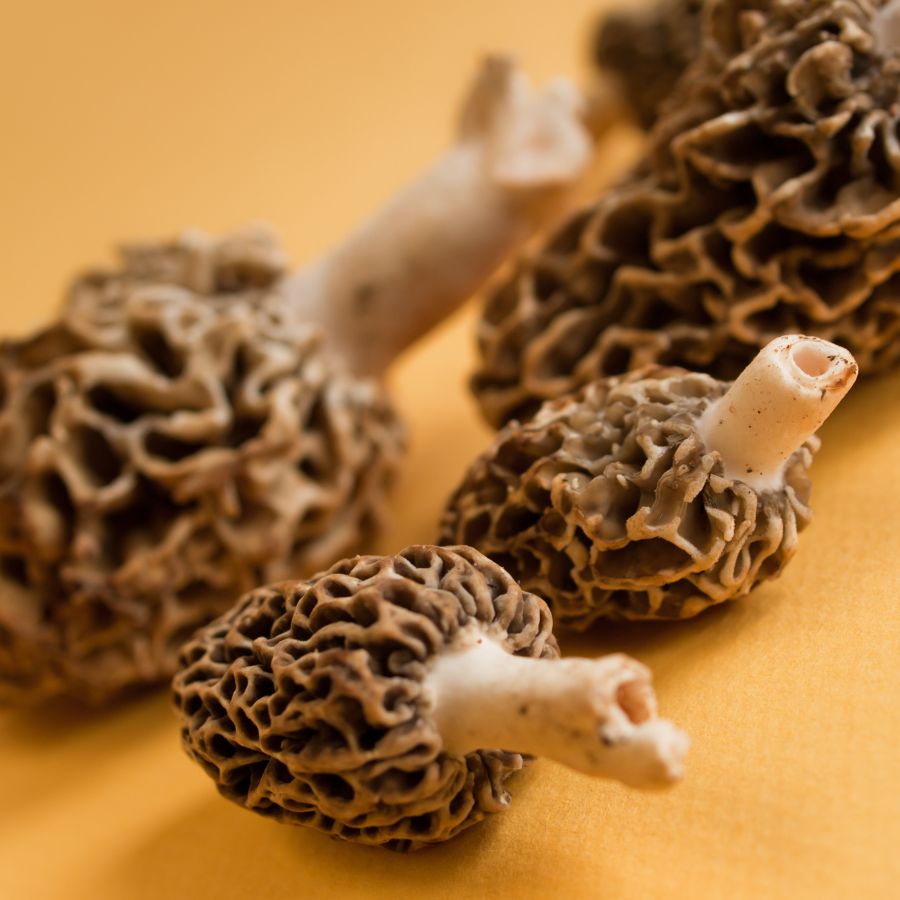
Some valuable forageables only show up for a short time each year, grow in hard-to-reach areas, or are very difficult to cultivate. That kind of rarity makes them harder to find and more expensive to buy.
Morels, truffles, and ramps are all good examples of this. They’re popular, but limited access and short growing seasons mean people are often willing to pay more.
A good seasonal foods guide can help you keep track of when high-value items appear.
High-End Dishes Boost the Value of Ingredients
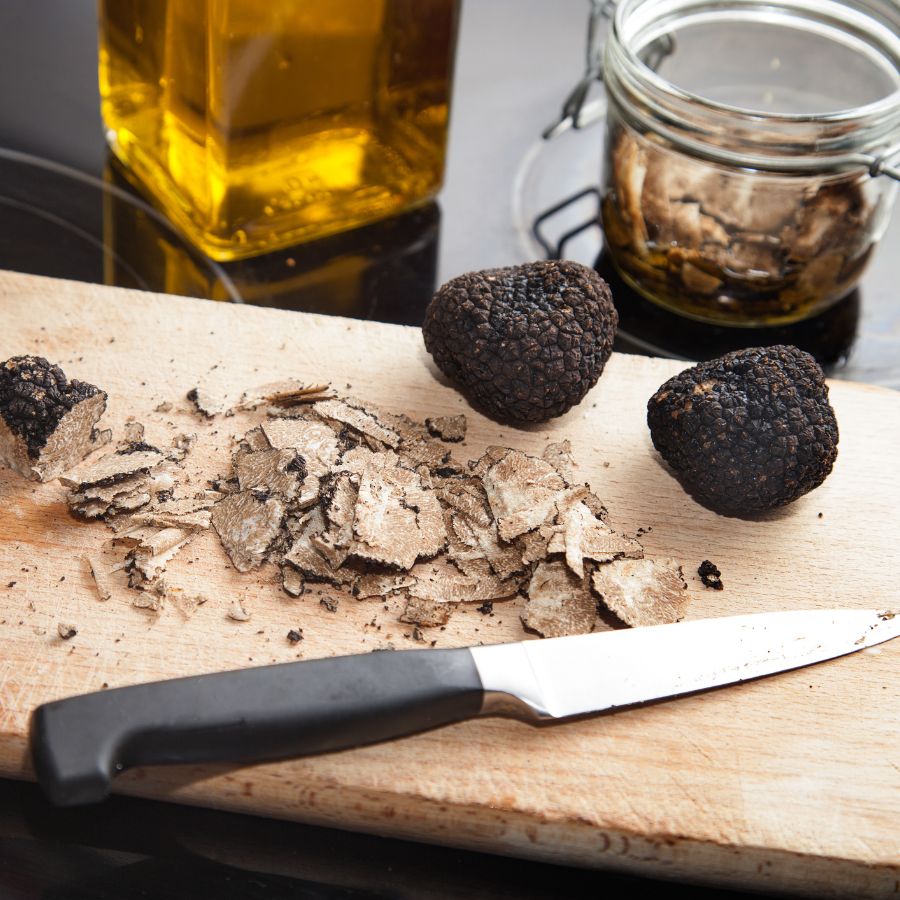
Wild ingredients that are hard to find in stores often catch the attention of chefs and home cooks. When something unique adds flavor or flair to a dish, it quickly becomes more valuable.
Truffles, wild leeks, and edible flowers are prized for how they taste and look on a plate. As more people try to include them in special meals, the demand—and the price—tends to rise.
You’ll find many of these among easy-to-identify wild mushrooms or herbs featured in fine dining.
Medicinal and Practical Uses Drive Forageable Prices Up
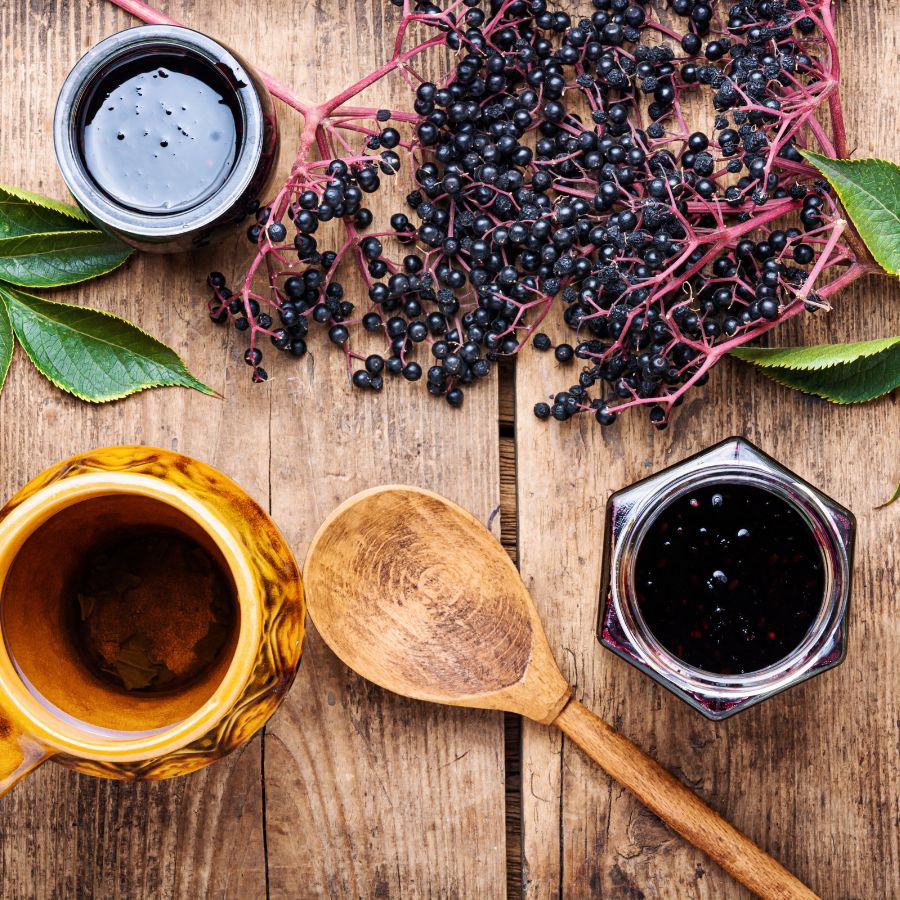
Plants like ginseng, goldenseal, and elderberries are often used in teas, tinctures, and home remedies. Their value comes from how they support wellness and are used repeatedly over time.
These plants are not just ingredients for cooking. Because people turn to them for ongoing use, the demand stays steady and the price stays high.
The More Work It Takes to Harvest, the More It’s Worth
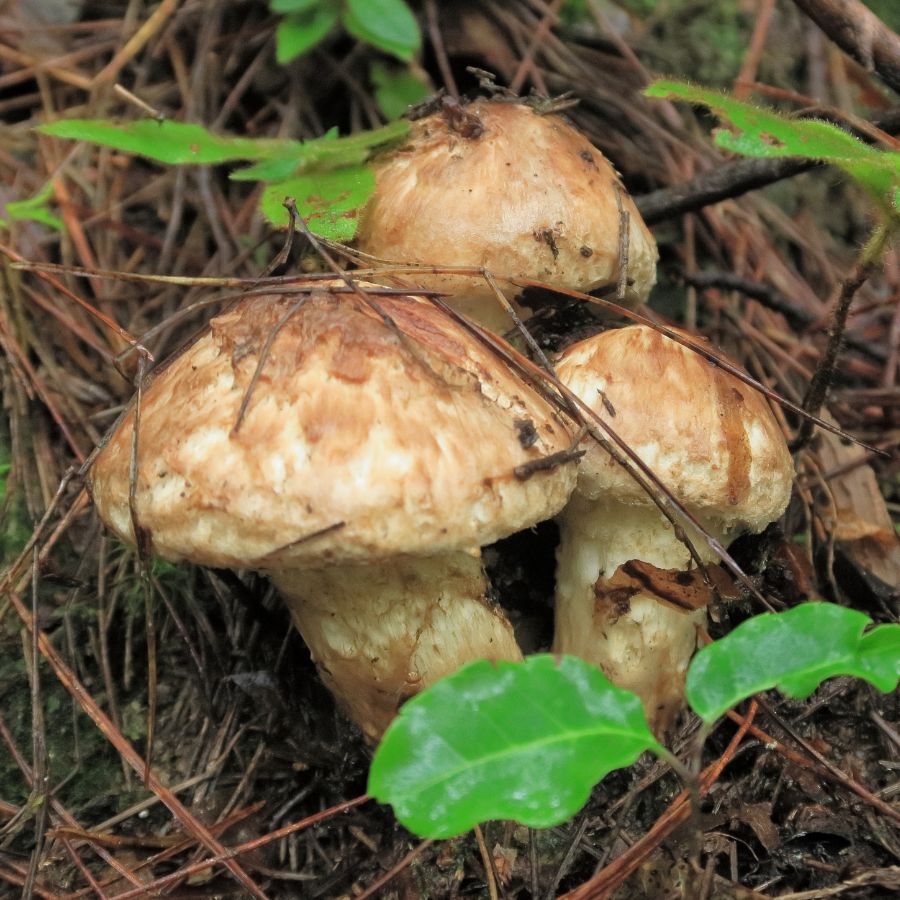
Forageables that are hard to reach or tricky to harvest often end up being more valuable. Some grow in dense forests, need careful digging, or have to be cleaned and prepared before use.
Matsutake mushrooms are a good example, because they grow in specific forest conditions and are hard to spot under layers of leaf litter. Wild ginger and black walnuts, meanwhile, both require extra steps for cleaning and preparation before they can be used or sold.
All of that takes time, effort, and experience. When something takes real work to gather safely, buyers are usually willing to pay more for it.
Foods That Keep Well Are More Valuable to Buyers
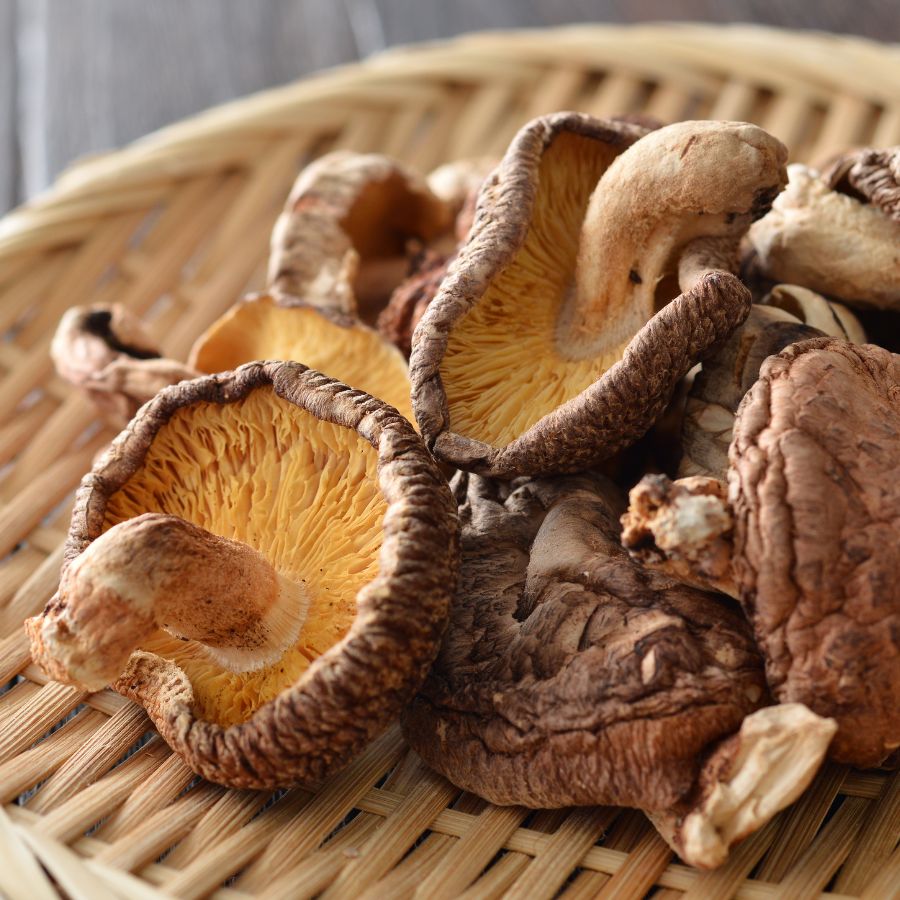
Some forageables, like dried morels or elderberries, can be stored for months without losing their value. These longer-lasting items are easier to sell and often bring in more money over time.
Others, like wild greens or edible flowers, have a short shelf life and need to be used quickly. Many easy-to-identify wild greens and herbs are best when fresh, but can be dried or preserved to extend their usefulness.
A Quick Reminder
Before we get into the specifics about where and how to find these mushrooms, we want to be clear that before ingesting any wild mushroom, it should be identified with 100% certainty as edible by someone qualified and experienced in mushroom identification, such as a professional mycologist or an expert forager. Misidentification of mushrooms can lead to serious illness or death.
All mushrooms have the potential to cause severe adverse reactions in certain individuals, even death. If you are consuming mushrooms, it is crucial to cook them thoroughly and properly and only eat a small portion to test for personal tolerance. Some people may have allergies or sensitivities to specific mushrooms, even if they are considered safe for others.
The information provided in this article is for general informational and educational purposes only. Foraging for wild mushrooms involves inherent risks.
Foraging Mistakes That Cost You Big Bucks
When you’re foraging for high-value plants, mushrooms, or other wild ingredients, every decision matters. Whether you’re selling at a farmers market or stocking your own pantry, simple mistakes can make your harvest less valuable or even completely worthless.
Harvesting at the Wrong Time
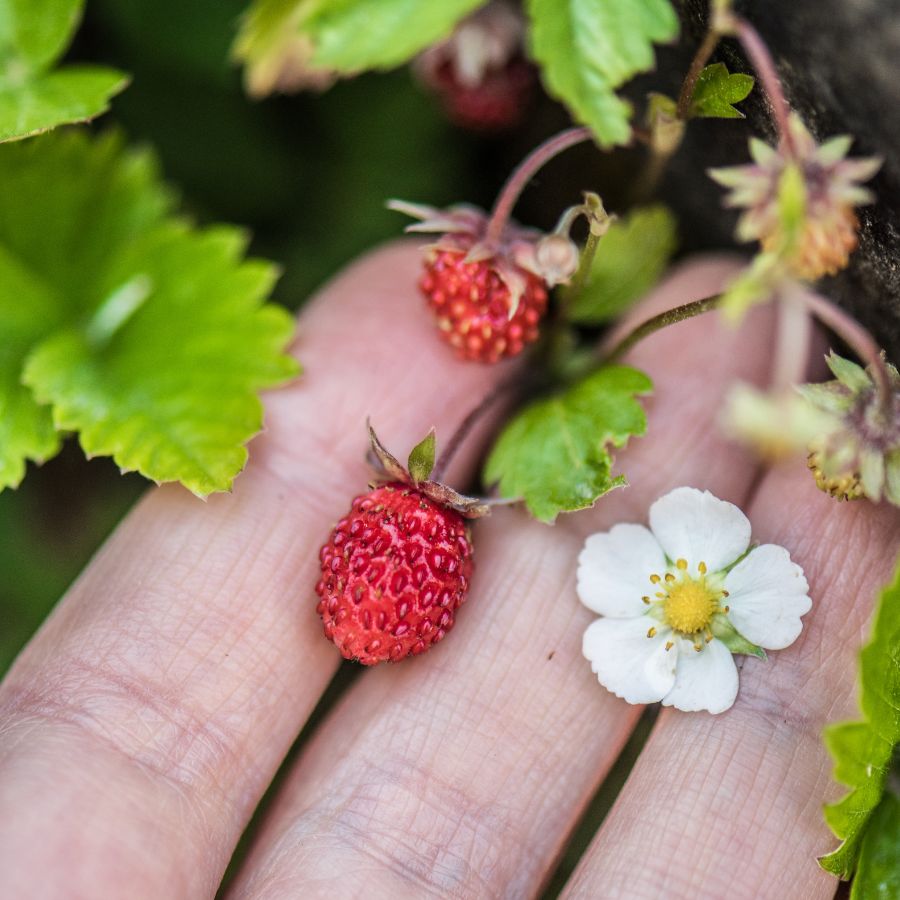
Harvesting at the wrong time can turn a valuable find into something no one wants. Plants and mushrooms have a short window when they’re at their best, and missing it means losing quality.
Morels, for example, shrink and dry out quickly once they mature, which lowers their weight and price. Overripe berries bruise in the basket and spoil fast, making them hard to store or sell.
Improper Handling After Harvest
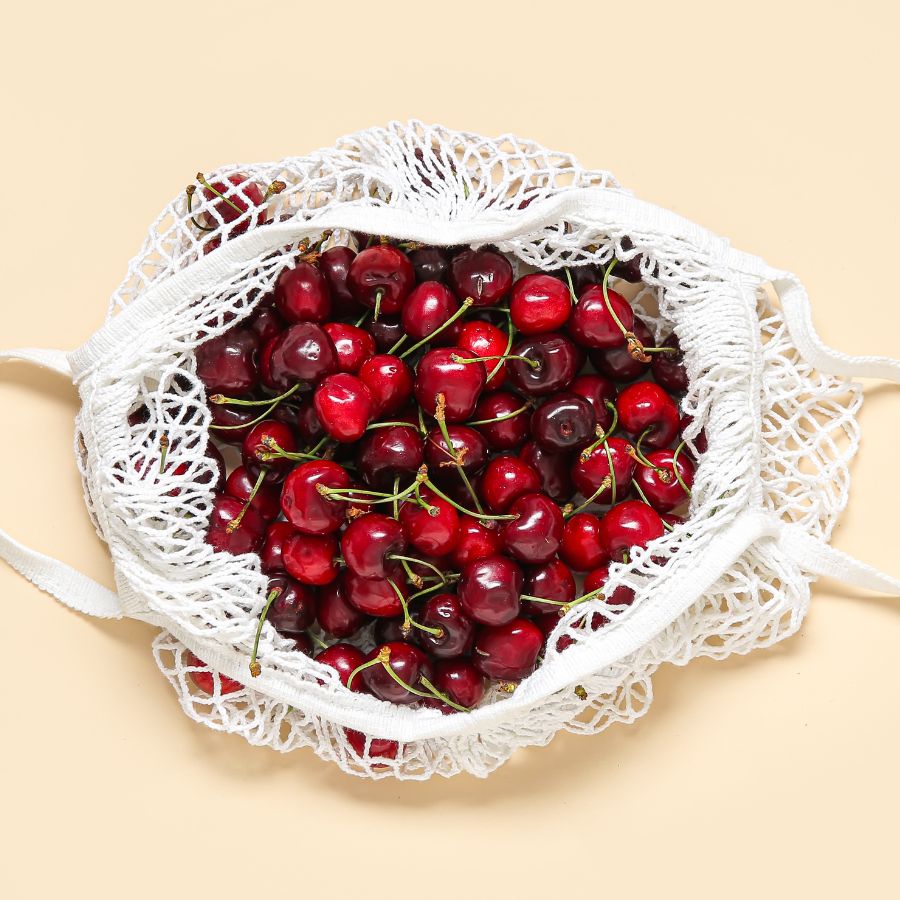
Rough handling can ruin even the most valuable forageables. Crushed mushrooms, wilted greens, and dirty roots lose both their appeal and their price.
Use baskets or mesh bags to keep things from getting smashed and let air circulate. Keeping everything cool and clean helps your harvest stay fresh and look better for longer.
This is especially important for delicate items like wild roots and tubers that need to stay clean and intact.
Skipping Processing Steps
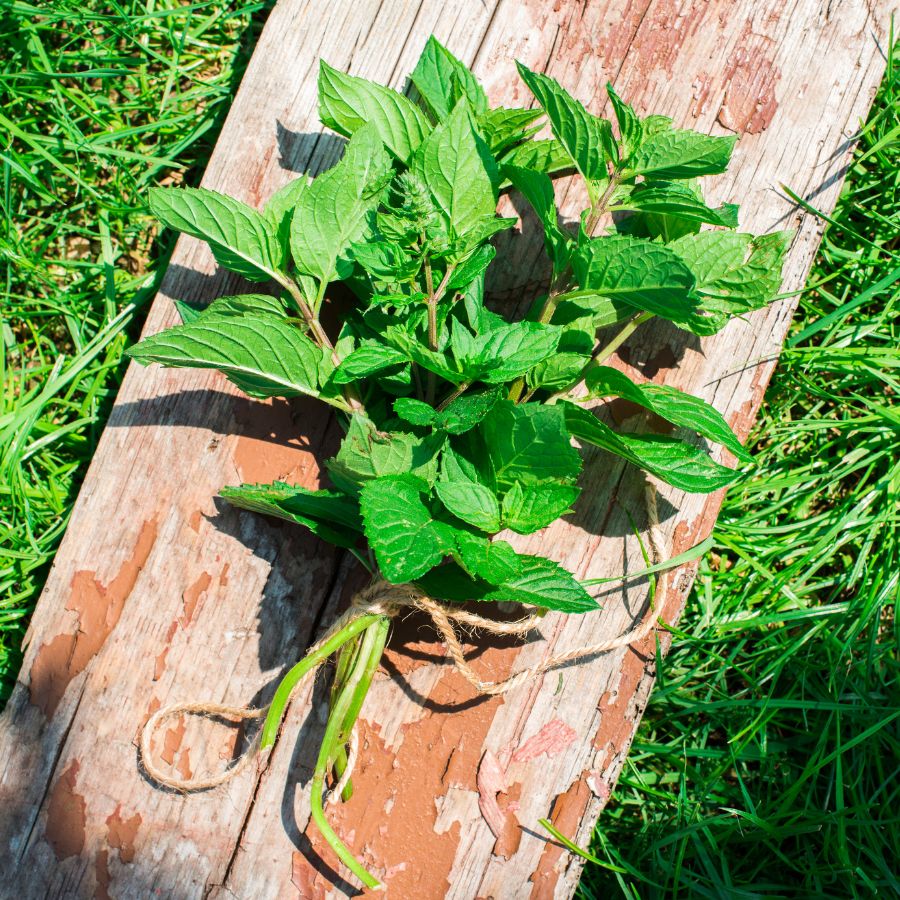
Skipping basic processing steps can cost you money. A raw harvest may look messy, spoil faster, or be harder to use.
For example, chaga is much more valuable when dried and cut properly. Herbs like wild mint or nettle often sell better when bundled neatly or partially dried. If you skip these steps, you may end up with something that looks unappealing or spoils quickly.
Collecting from the Wrong Area
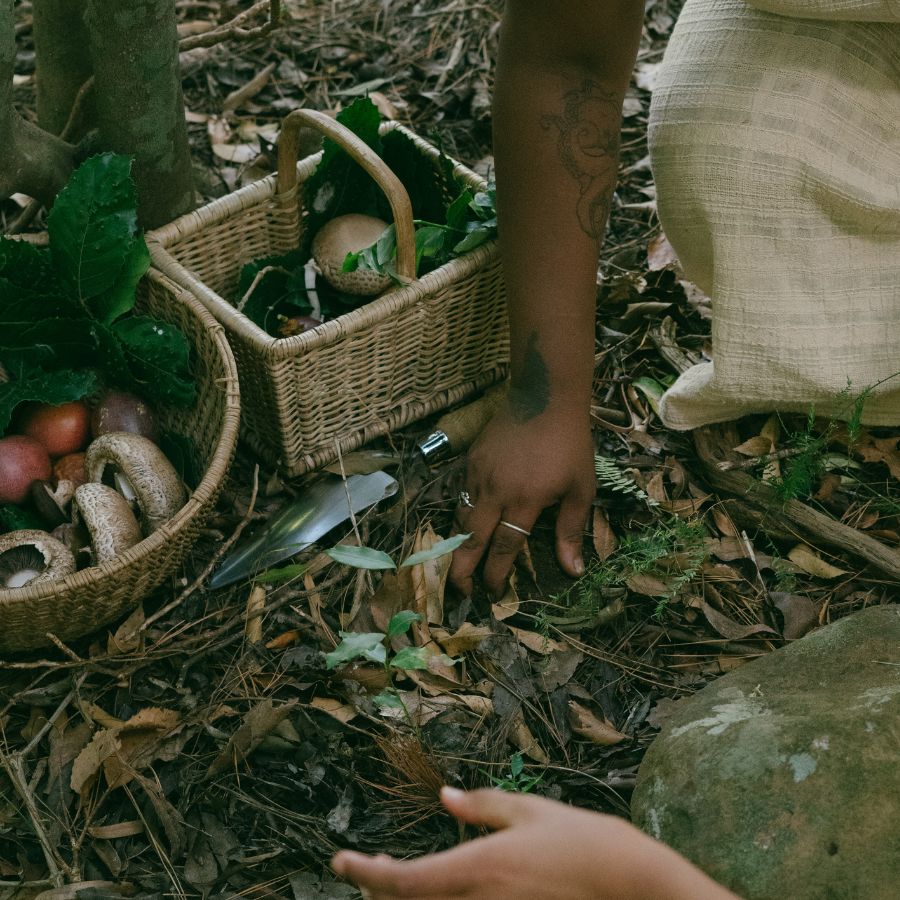
Harvesting in the wrong place can ruin a good find. Plants and mushrooms pulled from roadsides or polluted ground may be unsafe, no matter how fresh they look.
Buyers want to know their food comes from clean, responsible sources. If a spot is known for overharvesting or damage, it can make the whole batch less appealing.
These suburbia foraging tips can help you find overlooked spots that are surprisingly safe and productive.
Not Knowing the Market
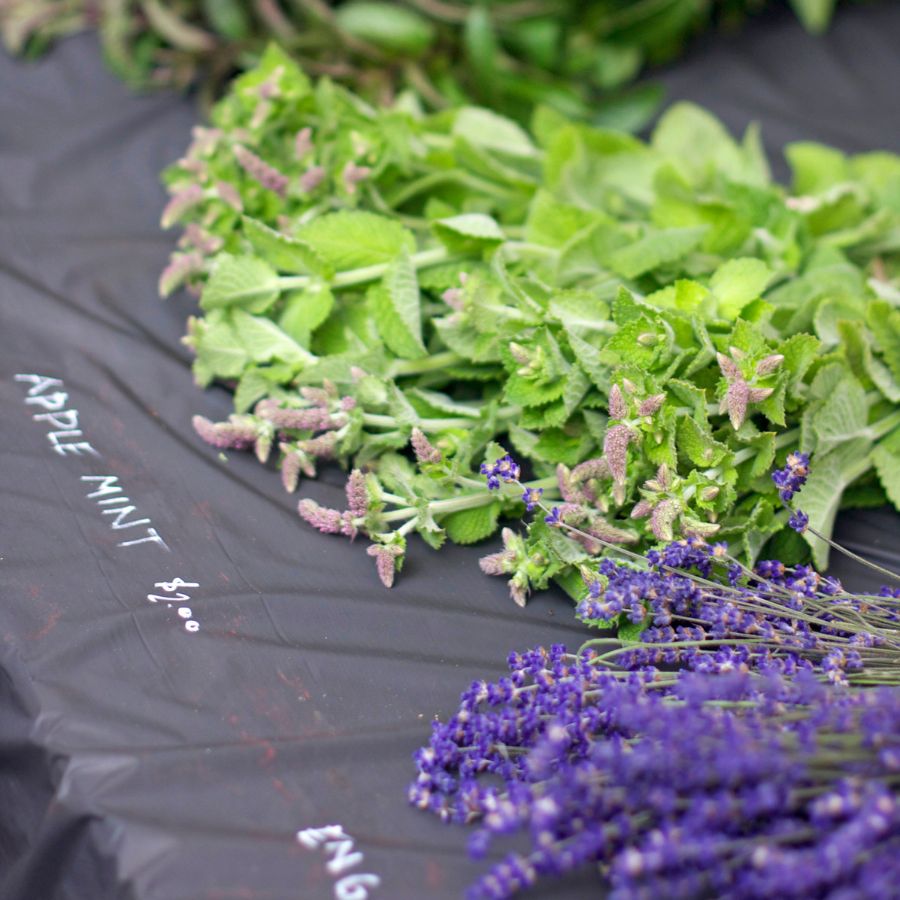
A rare plant isn’t valuable if nobody wants to buy it. If you gather in-demand species like wild ramps or black trumpets, you’re more likely to make a profit. Pay attention to what chefs, herbalists, or vendors are actually looking for.
Foraging with no plan leads to wasted effort and unsold stock. Keeping up with demand helps you bring home a profit instead of a pile of leftovers.
You can also brush up on foraging for survival strategies to identify the most versatile and useful wild foods.
Before you head out
Before embarking on any foraging activities, it is essential to understand and follow local laws and guidelines. Always confirm that you have permission to access any land and obtain permission from landowners if you are foraging on private property. Trespassing or foraging without permission is illegal and disrespectful.
For public lands, familiarize yourself with the foraging regulations, as some areas may restrict or prohibit the collection of mushrooms or other wild foods. These regulations and laws are frequently changing so always verify them before heading out to hunt. What we have listed below may be out of date and inaccurate as a result.
The Most Valuable Forageables in the State
Some of the most sought-after wild plants and fungi here can be surprisingly valuable. Whether you’re foraging for profit or personal use, these are the ones worth paying attention to:
Serviceberry (Amelanchier alnifolia)
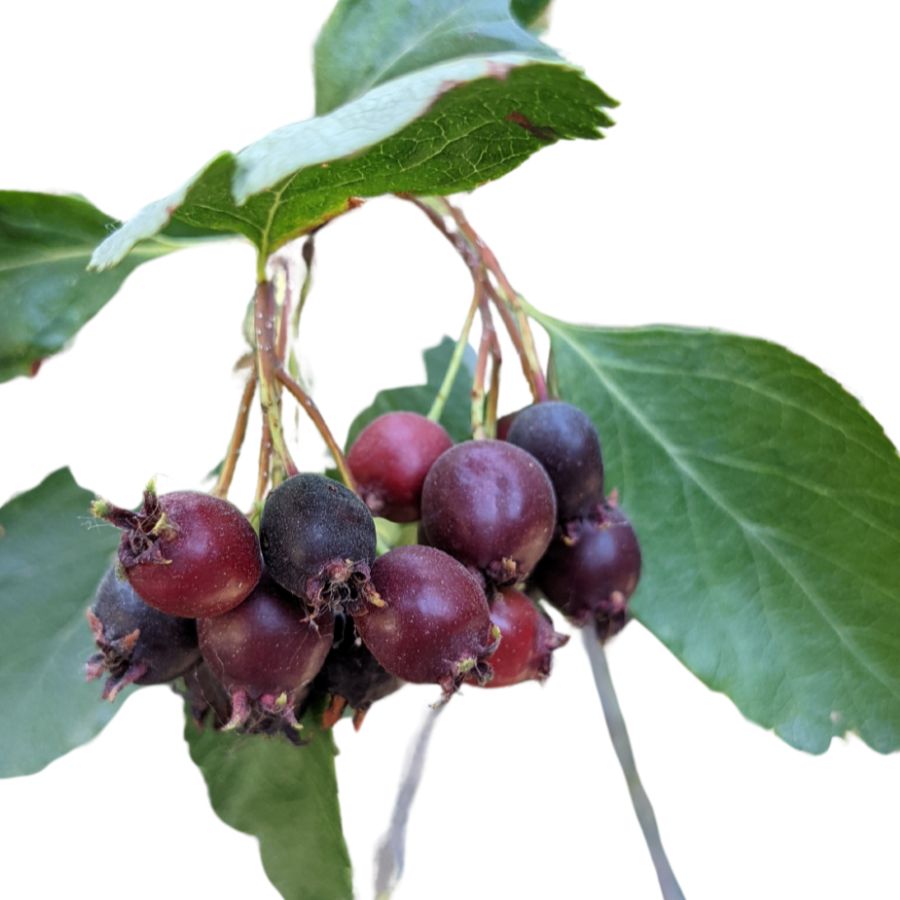
You can spot serviceberry shrubs by their smooth gray bark, clusters of white flowers, and dark blue to purple berries. To avoid confusing them with less safe berries like chokecherries, look for the five-pointed crown at the end of each ripe serviceberry.
These berries taste sweet and slightly nutty, almost like a richer version of a blueberry. Most people dry them, bake them into pastries, or cook them down into rich preserves.
The edible part is the ripe berry, while eating too many seeds raw could cause mild stomach issues because of their natural compounds. When dried or frozen, the berries keep their flavor and quality, making them more valuable for long-term storage and resale.
Serviceberries are a favorite among foragers and chefs because they are packed with flavor and work well in a wide range of recipes. Many buyers are willing to pay well for clean, well-prepared berries that hold up beautifully in baking and cooking.
Elderberry (Sambucus nigra ssp. cerulea)
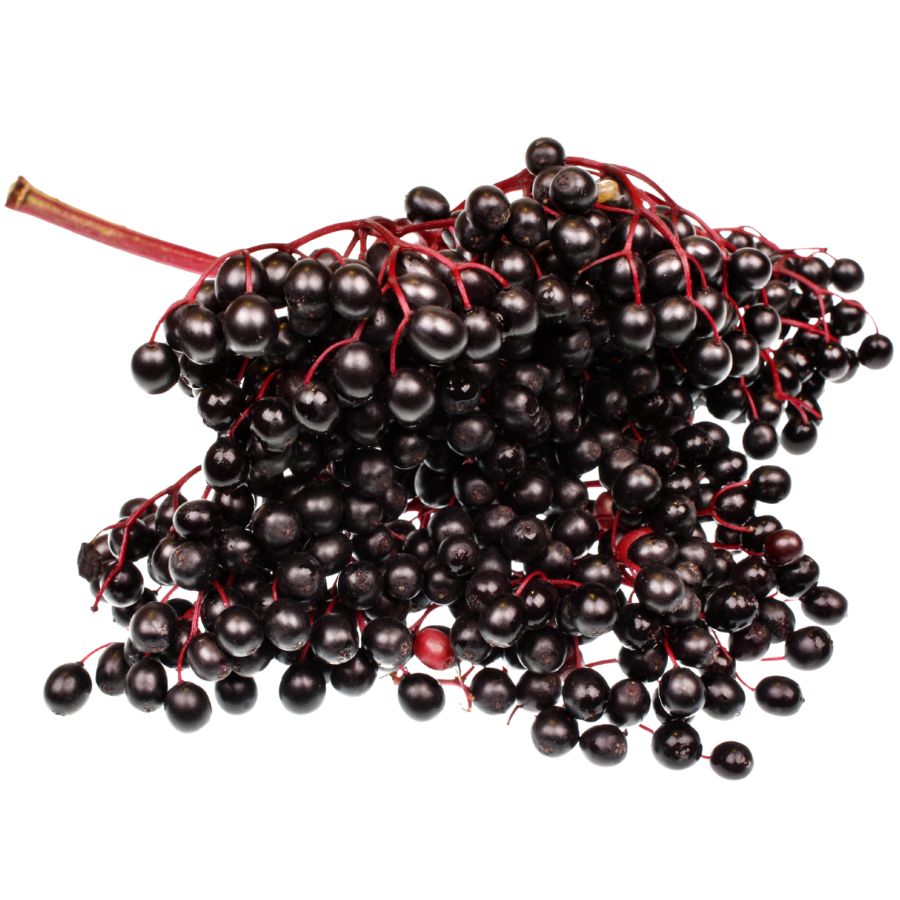
For centuries, elderberries have been gathered not just for food, but for making home remedies prized across the Southwest. Also called Mexican elder and tapiro, elderberry grows as a sprawling bush or small tree with clusters of tiny white flowers that turn into dusty blue-black berries.
There are toxic lookalikes you need to watch for, especially red elderberry, which has round clusters of bright red fruit. Elderberries grow in flatter, broader clusters and have a softer, more powdery appearance when ripe.
The berries have a deep, earthy flavor with a tart edge, and are usually cooked into jams, syrups, and baked goods to bring out their richness.
Make sure to avoid eating the raw berries, seeds, bark, or leaves because they can cause nausea unless they are properly cooked.
This plant stays valuable because the berries are used heavily in teas, tinctures, and syrups that people rely on for wellness, driving steady demand. Elderberries can also be dried and stored for months, making it even more profitable compared to foods that spoil quickly.
Chokecherry (Prunus virginiana)

The fruit of chokecherry, also called bitter-berry or Virginia bird cherry, grows in dense clusters and ripens to a deep purple-black color. Its puckering taste is balanced out when cooked into jellies, syrups, or wine.
You can eat the skin and pulp, but the large pit inside contains toxic compounds and should never be consumed raw. Even the leaves and stems can be harmful if ingested.
Chokecherry has a tart, astringent flavor when fresh, but that changes entirely once heat and sugar are added. The texture softens nicely in jams and fruit leather.
The plant’s value comes from both its culinary uses and the fact that it grows abundantly in the wild. While not particularly high-priced, the fruits can still bring a decent return when sold in processed form.
Chanterelle (Cantharellus spp.)
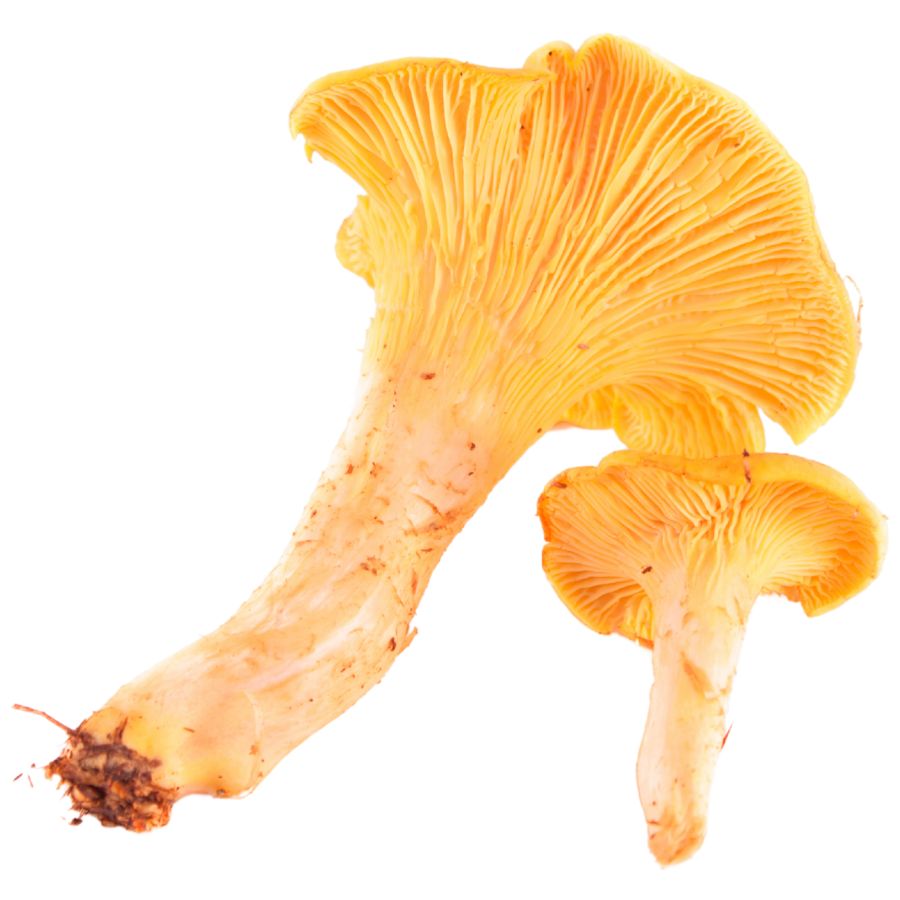
Golden chanterelles, also called egg mushrooms or girolles, are funnel-shaped and usually a bright yellow-orange with false gills that appear as deep, forked wrinkles. They have a fruity smell, almost like apricots, and a dense, meaty texture when cooked.
The part you want is the whole cap and stem, both of which soften nicely in butter or cream-based dishes. Their flavor is rich and peppery, which makes them popular in risottos, sautés, and soups.
A common lookalike is the jack-o’-lantern mushroom, which glows faintly in the dark and has true gills instead of shallow ridges. That one will give you stomach cramps, so pay close attention to the gill structure and color.
Fresh chanterelles can sell for over $20 per pound at farmers markets and restaurants, especially when demand is high. Their shelf life is short, but you can extend it by drying or pickling them soon after harvest.
Porcini (Boletus edulis)
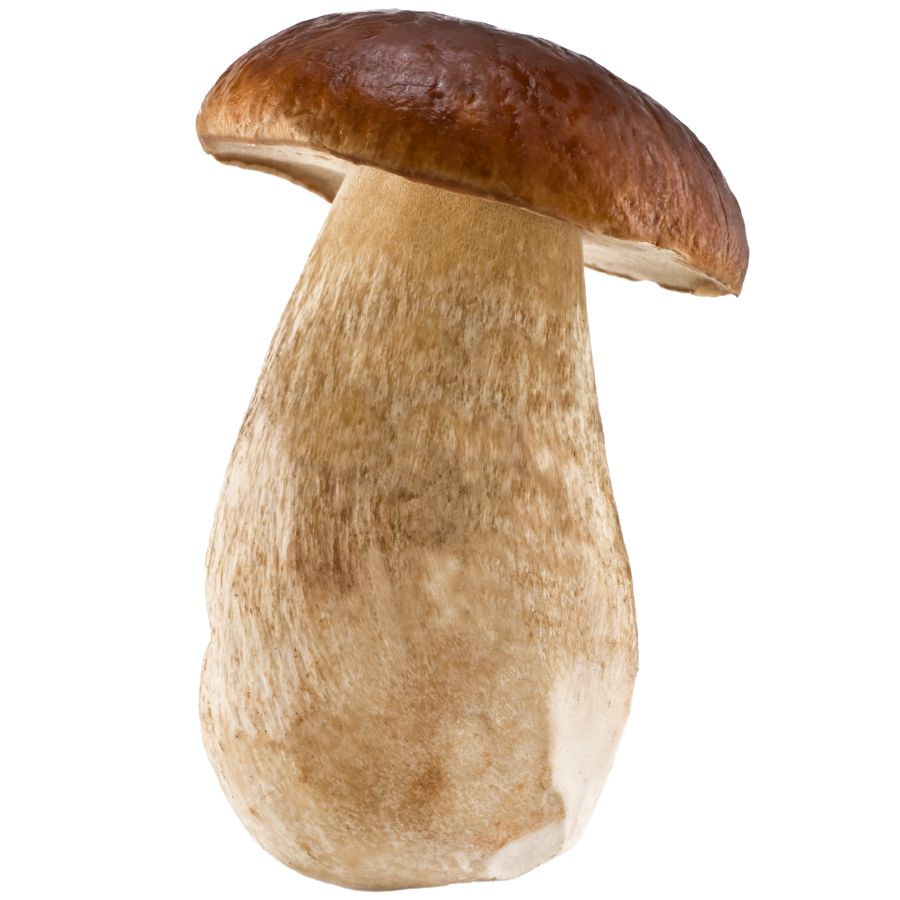
Porcini mushrooms, also called king boletes and penny buns, have thick, creamy-colored stalks and broad brown caps that feel slightly sticky when damp. The spongy layer under the cap is made of tiny pores instead of gills, which helps set them apart from inedible lookalikes like the bitter bolete.
The flavor is rich, nutty, and meaty, making porcini a favorite for sautés, risottos, soups, and pasta dishes. Their firm texture holds up well when dried, and dried porcini are often ground into powders or rehydrated to add deep flavor to broths and sauces.
You can safely eat the cap and the upper part of the stalk, but it is a good idea to trim off any woody or tough lower portions before cooking. A quick check for tiny holes or tunneling is important too, because insects are drawn to porcini and can burrow inside without leaving much visible damage.
Wild porcini are highly valued because they are difficult to cultivate commercially, and foragers often find them in remote forest areas, which adds to their scarcity. High-quality dried porcini can sell for $30 to $60 per pound, with fresh specimens commanding even higher prices when they appear on fine dining menus.
Curly Dock (Rumex crispus)
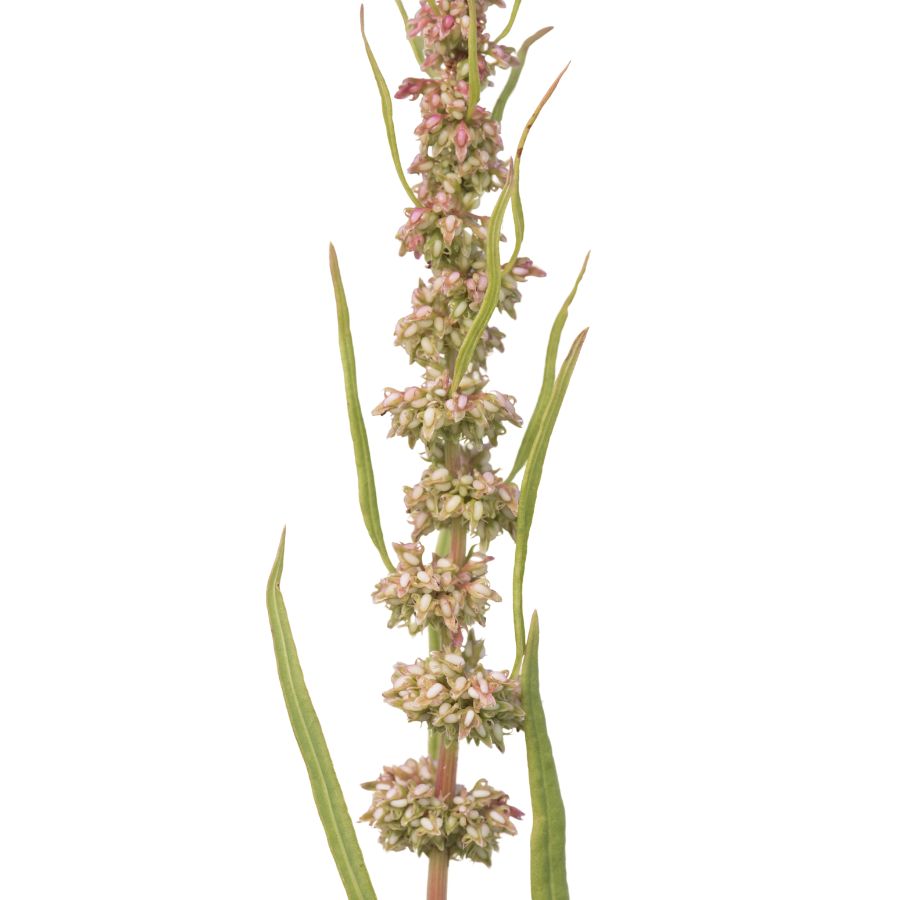
Curly dock grows in a tall, upright cluster with narrow, wavy-edged leaves and a deep taproot. You’ll often see the older seed stalks turn a rusty brown and remain standing even after the leaves die back.
The leaves are edible when young, with a tart, lemony flavor and a slightly chewy texture once cooked. Most people boil them in a few changes of water or sauté them like spinach.
You can also harvest the seeds, which look like small, papery brown hulls along the dried stalks. They’re edible too, but gritty and often ground into flour to mix with other grains.
Some dock species aren’t as palatable or safe, especially ones with broader leaves or harsh, acrid sap. Curly dock is generally safe in moderation, but it does contain oxalates, so it’s not a good idea to eat it in large quantities every day.
Morel Mushroom (Morchella spp.)
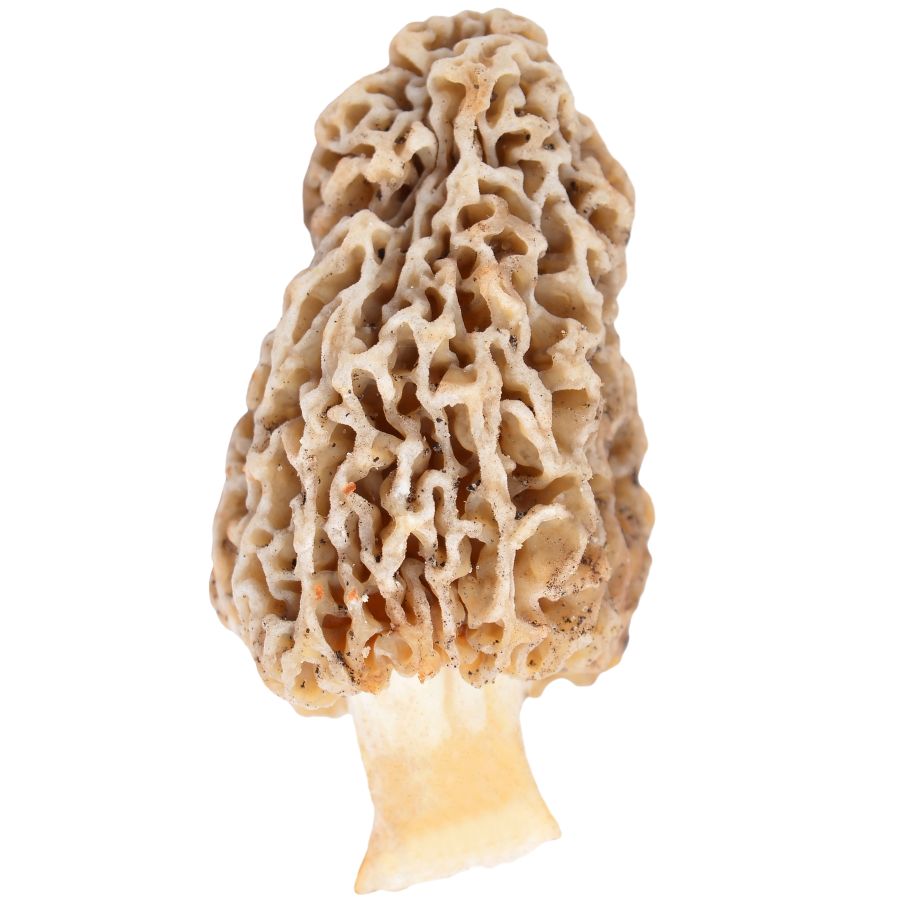
Morel mushrooms have a honeycomb-like surface with deep pits and ridges. The cap is fully attached to the stem, which helps set them apart from dangerous lookalikes like false morels that often have wrinkled, lobed caps and loose or cottony interiors.
The rich, nutty flavor and slightly chewy texture make morels a favorite in high-end kitchens. Many people sauté them in butter, stuff them, or dry them for later use because they hold their flavor extremely well.
Always cook morels thoroughly because raw ones can cause stomach upset, even when they look perfectly normal.
Morels are highly prized by chefs and home cooks, sometimes selling for over $50 per pound fresh and even more when dried.
Part of what makes morels so valuable is how hard they are to cultivate and find. They often grow in specific, unpredictable places, and their short harvesting window drives up both the demand and the price.
Golden Currant (Ribes aureum)
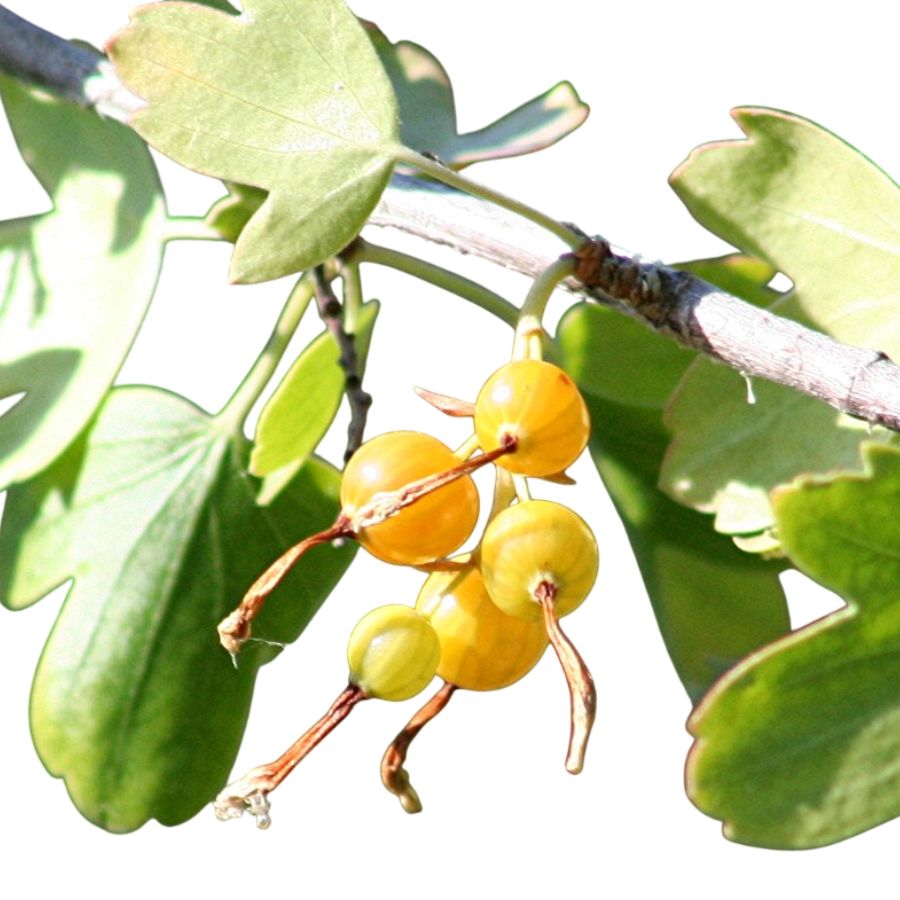
Golden currants grow on shrubs with soft lobed leaves and smooth, thornless branches, producing colorful berries that range from golden yellow to nearly purple. These berries are edible, juicy, and slightly tangy, often used in pies or turned into jam.
Only the berries are eaten, while the stems and leaves are not used for food. You can dry the fruit or freeze it, and the skin softens nicely when simmered into sauces or syrup.
They’re sometimes confused with other currants or wild gooseberries, but golden currants lack thorns and have a less aggressive flavor. If the plant has bristly stems or berries with tiny hairs, it’s probably not golden currant.
Golden currants are valuable in the kitchen for their versatility and unique taste, even though they aren’t commonly sold in stores. Their real worth lies in how many ways you can prepare and store the fruit without losing flavor.
Milk Thistle (Silybum marianum)

With sharp-edged leaves streaked in white and tall stems ending in large purple blooms, milk thistle—also called St. Mary’s thistle—is easy to recognize once you’ve seen it. The young leaves, peeled stems, and flower buds are all edible if properly cleaned and trimmed.
Some people confuse it with Scotch thistle, but milk thistle has wider leaves with fewer hairs and more distinct veining. The stems can be tough if left unpeeled, so it’s best to remove the outer layer before cooking.
You can boil or steam the peeled stalks like celery, or sauté the buds like small artichokes. The taste is earthy with a faint artichoke-like bitterness, especially in the older parts.
Most of the plant isn’t commercially valuable, but the seeds are processed for liver detox products and can fetch a moderate price in bulk. Just make sure not to eat the seeds raw unless they’re properly prepared.
Rocky Mountain Bee Plant (Cleome serrulata)
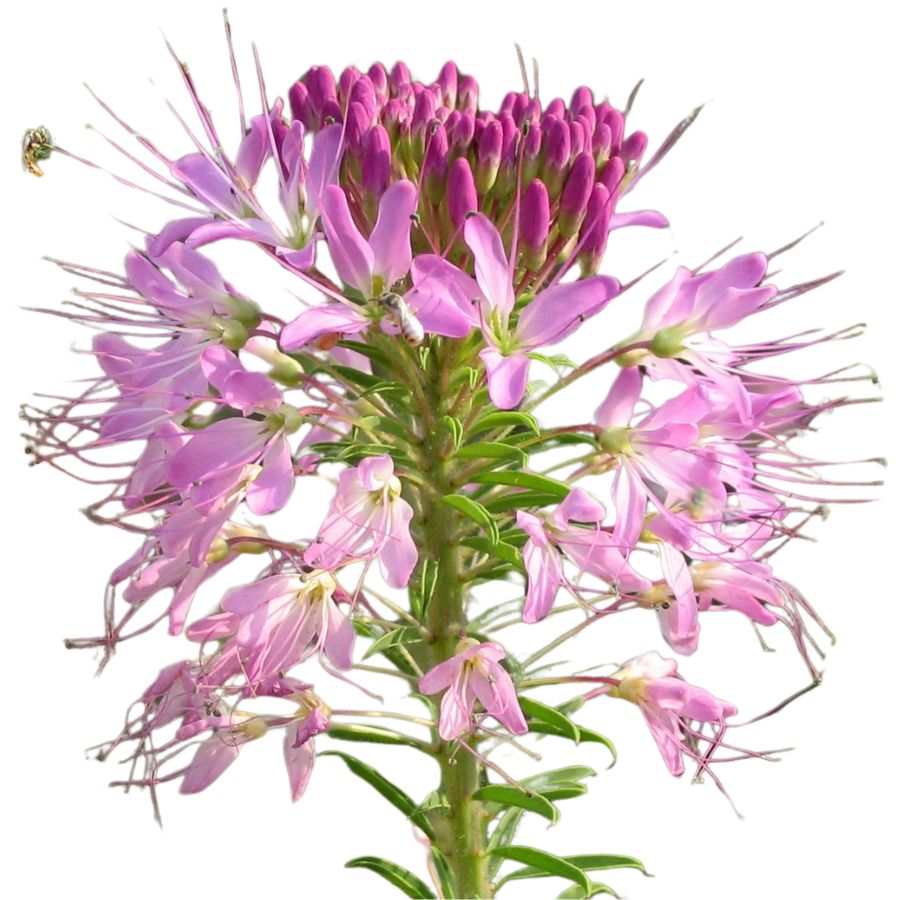
Rocky Mountain bee plant has tall stems, narrow leaves in whorls of three, and bright purple-pink blooms with long stamens that give it a spidery look. It’s edible, but only after cooking—the raw parts are too bitter and fibrous to eat safely.
The flowers, young shoots, and tender leaves are the main edible parts, with the leaves often prepared by boiling or drying. The cooked texture is soft and slightly chewy, with a flavor that falls somewhere between spinach and mustard greens.
It’s sometimes confused with wild cleome relatives that aren’t traditionally eaten and may be irritating if ingested. The difference is mostly in the pod shape and the overall size of the plant—Rocky Mountain bee plant is taller and produces larger seedpods.
This plant was important to many Indigenous diets and is still valued in some areas for its rich mineral content and food security. While it’s not a cash crop, its cultural value and usefulness in traditional meals give it lasting importance.
Shaggy Mane (Coprinus comatus)
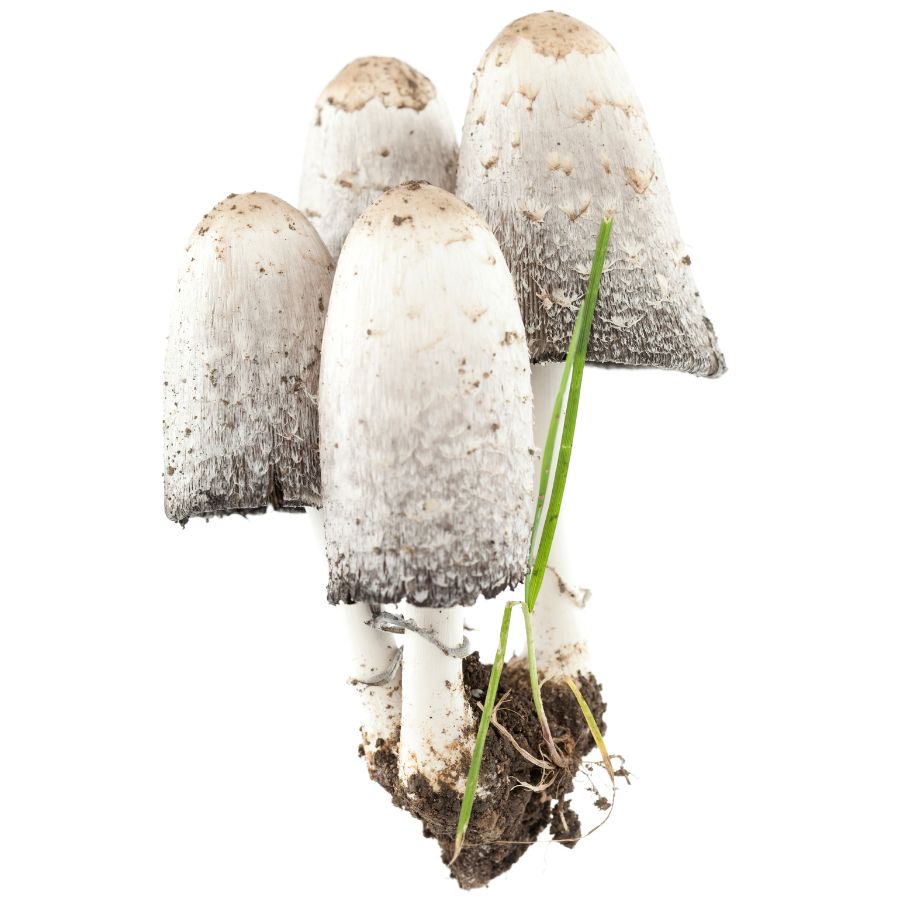
Shaggy mane mushrooms have tall, narrow caps covered in loose white scales that eventually melt into black liquid. When fresh and young, their caps are prized for their soft, silky texture and mild flavor.
They’re best cooked right after harvest—most people pan-fry them in butter or add them to creamy sauces where their subtle flavor can shine. Some people also freeze them pre-cooked to extend their usefulness, since raw ones don’t last long.
One thing to watch out for is the similar-looking common ink cap, which can cause digestive issues when combined with alcohol. You can tell them apart by looking at the cap’s surface—shaggy manes have more prominent scales and a more elongated shape.
They aren’t sold widely because they dissolve within hours of being picked, but they’re still a favorite among mushroom hunters. Even though their market value is low, their culinary value is high if you can get to them in time.
Sunflower (Helianthus annuus)
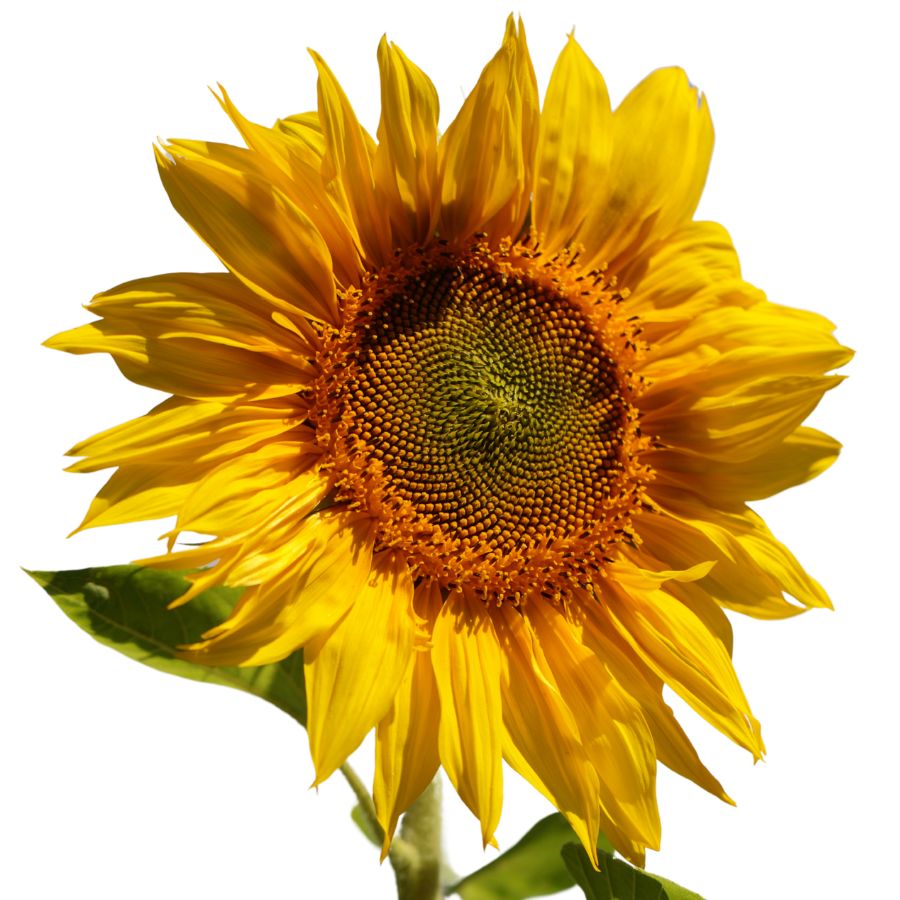
The tall, bright blooms of the sunflower aren’t just ornamental—this plant offers edible seeds with a mild, nutty flavor and a tender crunch when roasted. You can eat the seeds raw, toasted, or ground into sunflower butter, and they’re also pressed for oil that’s widely used in cooking.
What makes sunflower seeds valuable is their high oil content and protein, making them both nutritious and commercially important. The seeds can sell for a good price, especially in large-scale production or organic markets.
While the seeds and sprouts are edible, you should avoid the leaves and stalks, which are too fibrous and bitter to be useful. The seed head itself is also too tough to eat once matured.
Wild sunflower varieties do have some lookalikes, including certain types of daisies or ragweed, but only sunflowers produce large, seed-packed heads with thick, bristly centers. If you’re unsure, cracking open a flower head to check for developing seeds is a reliable indicator.
Plains Pricklypear Cactus (Opuntia polyacantha)
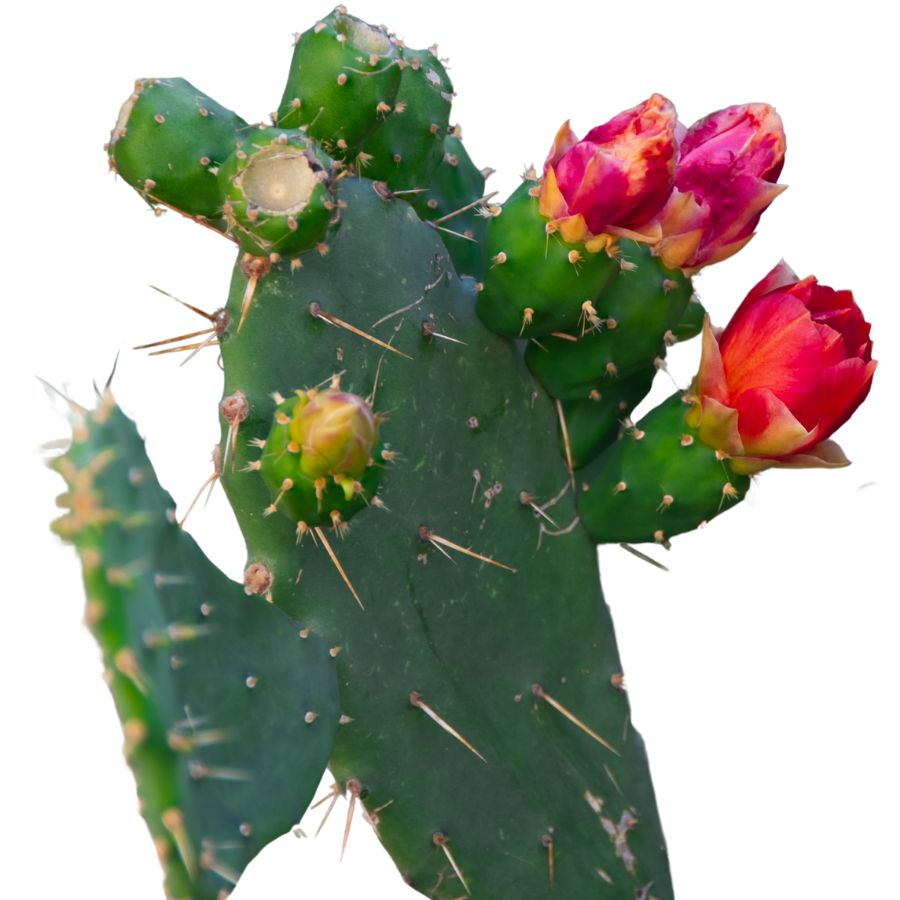
Plains pricklypear cactus has flat green pads that grow in clumps, each one lined with long spines and short barbed hairs that irritate the skin. The pads and fruit are edible if handled and cleaned correctly.
The pads are best sliced and grilled or sautéed, giving them a slightly sour flavor with a texture like cooked okra. The fruit can be eaten fresh or processed into juice, candy, or jelly.
It’s important not to confuse it with non-edible species that grow in similar environments, especially those without fleshy fruit or those with dense clusters of long, dark spines. Always use gloves and tongs to avoid getting glochids in your skin.
Harvested pads, or nopales, are sold fresh or jarred in brine, and the fruit is often sold peeled at local markets. While not extremely expensive, cleaned pricklypear products are in steady demand and can be a valuable addition to a forager’s haul.
Cattail (Typha latifolia)
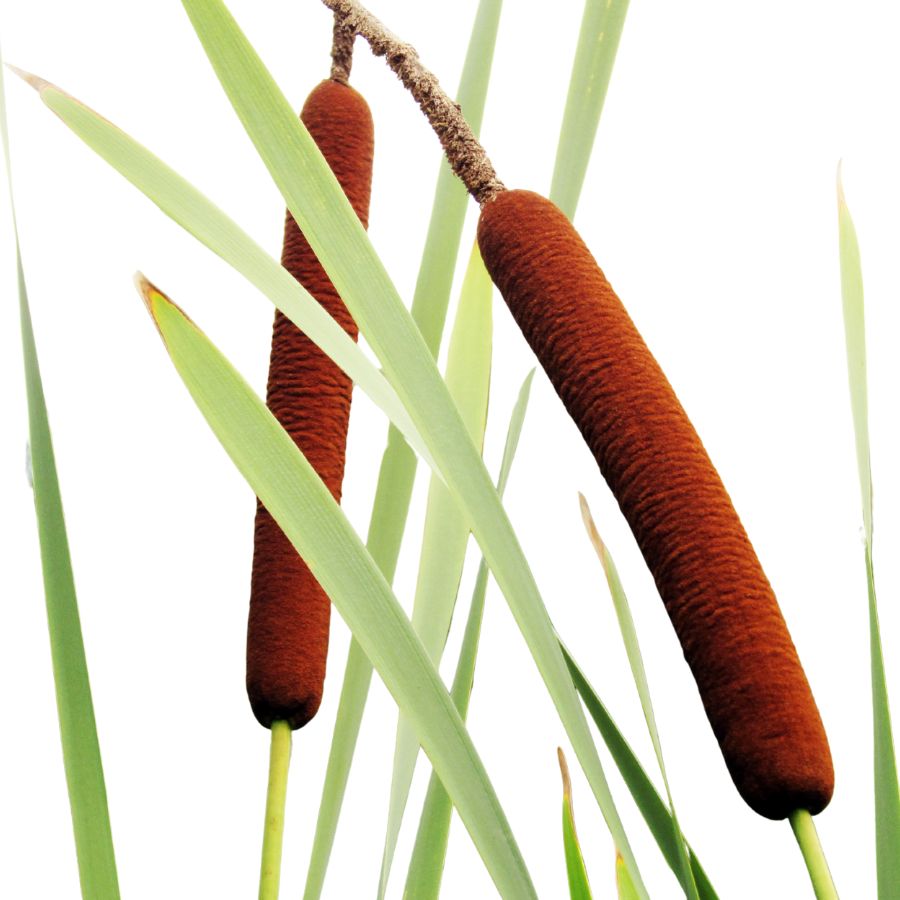
Cattails grow tall in shallow water and feature long, narrow leaves with brown, sausage-like flower heads that help identify them. You can eat the tender shoots, the young green flower spikes, and the starchy rhizomes underground.
The shoots are often compared to cucumbers or hearts of palm and can be used raw in salads. The flower spikes are more enjoyable when steamed or boiled before they toughen.
Rhizomes have more calories than the rest of the plant, but they’re fibrous and need to be cooked or processed into flour to be useful. Avoid picking anything that looks similar but lacks the brown flower head—iris and other lookalikes can be harmful if ingested.
Cattails aren’t sold for much commercially, but their abundance and the number of usable parts make them a solid wild food source. Foragers value them for how much food they provide from one plant, even if they won’t fetch a high price.
Arrowleaf Balsamroot (Balsamorhiza sagittata)
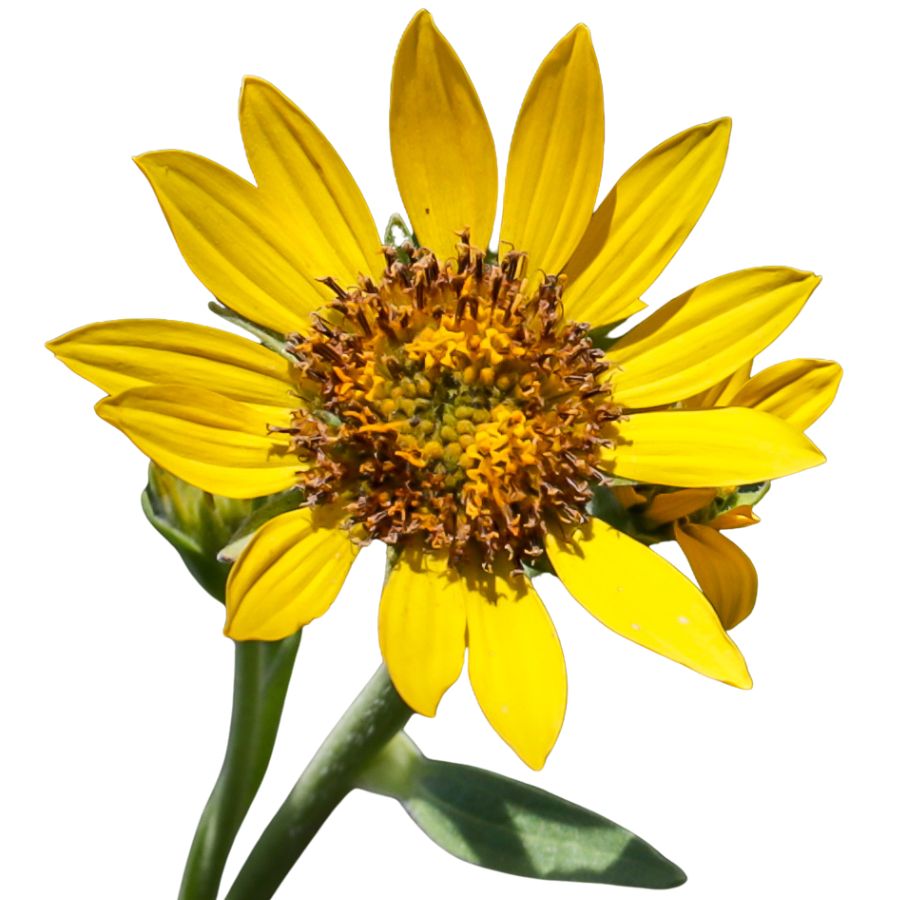
Arrowleaf balsamroot has sunflower-like blooms and thick, fuzzy leaves shaped like an arrowhead. The leaves are edible but a bit coarse, so they’re best tossed into a soup or lightly sautéed.
The roots can be dug up, peeled, and roasted, but they have a very strong, resin-heavy flavor that not everyone enjoys. Still, they’re packed with nutrients and can be stored dry for long periods.
People sometimes confuse this plant with mule’s ears, which also has yellow flowers but narrower leaves with a glossier look. Arrowleaf’s paler, softer leaves are a reliable way to tell the two apart.
The seeds can be eaten raw or ground into flour, though they’re small and tedious to collect. Even though it’s not a high-dollar crop, every part of arrowleaf balsamroot offers something edible and practical, which makes it a reliable wild food.
Indian Ricegrass (Achnatherum hymenoides)
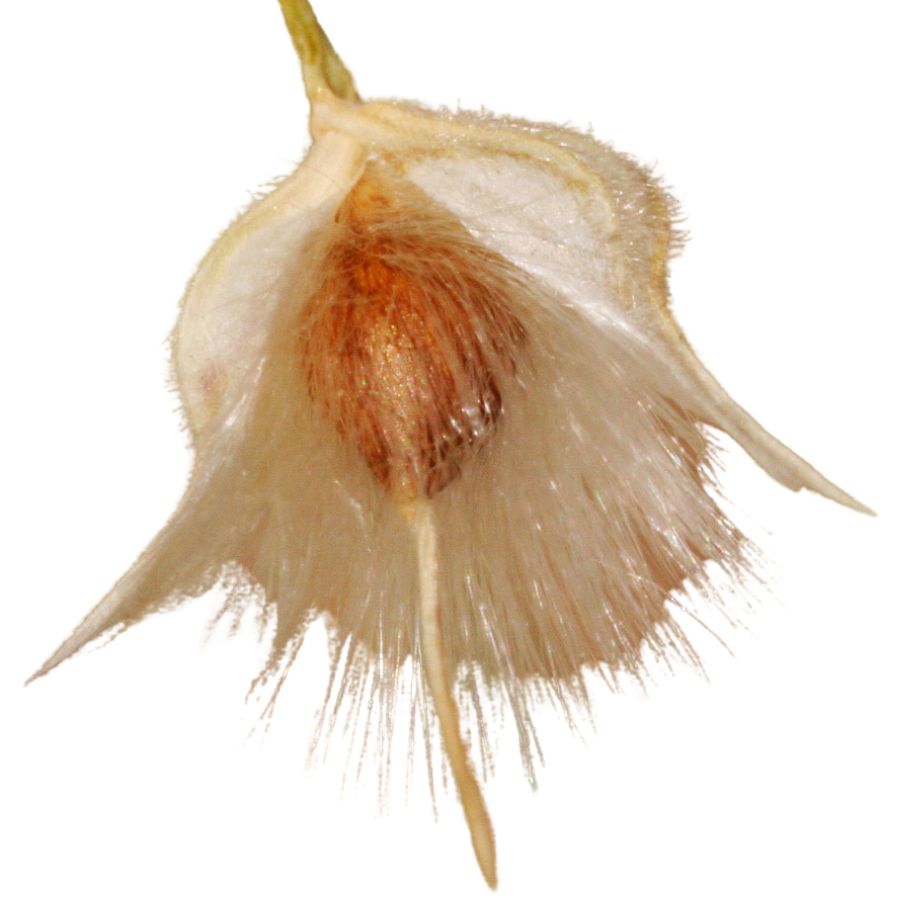
The seeds of Indian ricegrass were once a major food source for Indigenous communities, and they’re still edible today. You can grind them into flour that has a slightly nutty flavor and a soft, pleasant texture when baked.
Its seeds grow in tight, brushy clusters atop thin stalks that can grow over a foot tall. Unlike some lookalike grasses, Indian ricegrass seeds are encased in a papery hull that comes off easily when processed.
This plant doesn’t have any toxic parts, but only the seeds are used for food. The leaves and stalks are fibrous and not suitable for eating.
Indian ricegrass flour can be used in flatbreads or porridge, though it takes time to harvest and clean by hand. It’s commercially valuable in the gluten-free market, fetching a higher price than common grains like wheat or corn.
Colorado Pinyon (Pinus edulis)
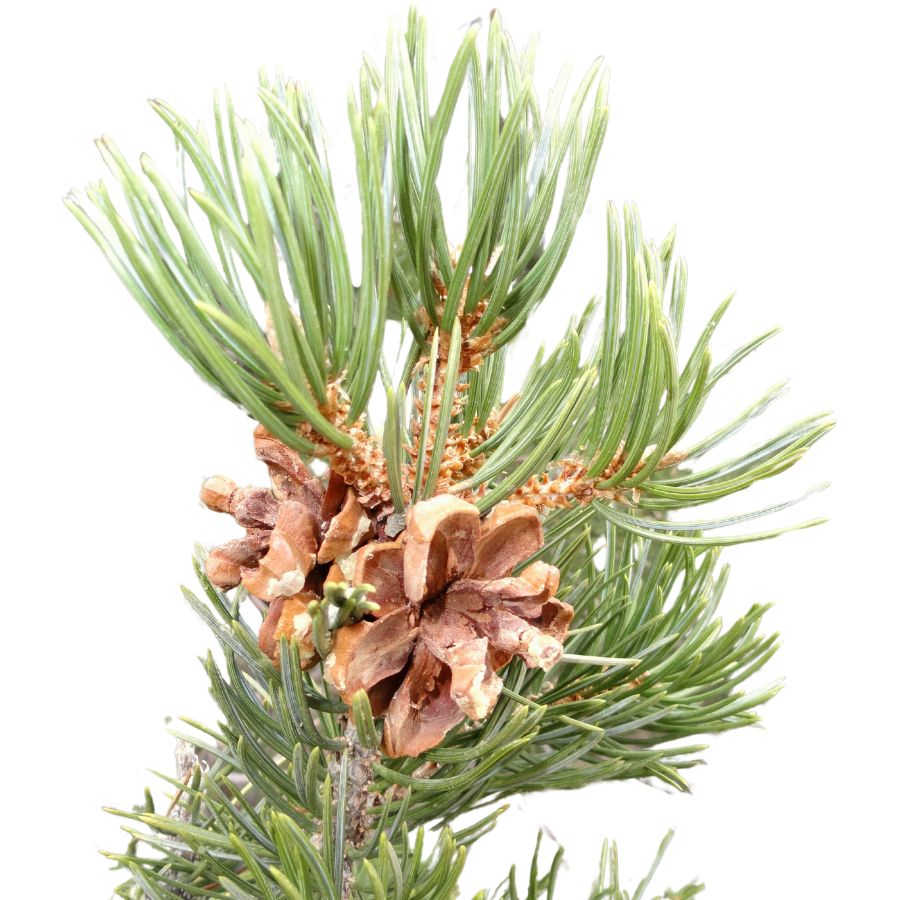
Colorado pinyon, often just called pinyon pine or nut pine, produces edible seeds that are small but rich and flavorful. The seeds are hidden inside tightly packed cones and have a soft, oily texture with a slightly sweet, buttery taste.
You can eat them raw or roast them for a deeper flavor, and they’re often ground into paste or added to baked goods. What makes them valuable is their limited yield and the effort required to harvest and shell each nut, which can raise their price to over $30 per pound in some markets.
The seeds are the only edible part—needles and resin shouldn’t be consumed. Some people confuse Colorado pinyon with singleleaf pinyon or other pine species whose nuts are bitter or not as palatable, but the difference is clear once you taste them.
The tree itself is short and bushy, with pairs of stiff, dark green needles about an inch long. Its cones are squat and round, and they open slowly, which makes harvesting a bit more involved than with other pines.
Where to Find Valuable Forageables in the State
Some parts of the state are better than others when it comes to finding valuable wild plants and mushrooms. Here are the different places where you’re most likely to have luck:
| Plant | Locations |
| Serviceberry (Amelanchier alnifolia) | – Provo Canyon (Uinta-Wasatch-Cache National Forest) – Dixie National Forest near Panguitch Lake – Cedar Canyon (near Cedar Breaks National Monument) |
| Elderberry (Sambucus nigra ssp. cerulea) | – Logan Canyon (Uinta-Wasatch-Cache National Forest) – Provo Canyon (Wasatch Range) – Cedar Canyon (below Cedar Breaks National Monument) |
| Chokecherry (Prunus virginiana) | – Bear River Migratory Bird Refuge – Nebo Loop Scenic Byway (Uinta National Forest) – Logan Canyon (Uinta-Wasatch-Cache National Forest) |
| Chanterelle (Cantharellus spp.) | – Mirror Lake Highway (Uinta-Wasatch-Cache National Forest) – Fishlake National Forest near Koosharem – Big Cottonwood Canyon (Wasatch Mountains) |
| Porcini (Boletus edulis) | – Fishlake National Forest (near Thousand Lake Mountain) – Mirror Lake Highway (Uinta Mountains) – Mount Timpanogos area (Uinta-Wasatch-Cache National Forest) |
| Curly Dock (Rumex crispus) | – Provo River Trail (Wasatch County) – Logan River drainage (Cache Valley) – Sevier River corridor (Richfield area) |
| Morel Mushroom (Morchella spp.) | – Bryce Canyon National Park border woodlands – Uinta National Forest (aspen drainages) – Fishlake National Forest (lower elevation cottonwood groves) |
| Golden Currant (Ribes aureum) | – Provo Canyon benches – Logan Canyon (riparian trails) – Colorado River corridor near Moab |
| Milk Thistle (Silybum marianum) | – UT-14 roadside near Cedar City – Cache Valley field margins – I-15 interchanges near St. George |
| Rocky Mountain Bee Plant (Cleome serrulata) | – Fishlake National Forest clearings – Price Canyon overlook (Carbon County) – Green River flats (Uintah Basin) |
| Shaggy Mane (Coprinus comatus) | – Campgrounds in Uinta-Wasatch-Cache National Forest – Snowbird Resort (Little Cottonwood Canyon) – Wasatch State Park trailheads |
| Sunflower (Helianthus annuus) | – Old Highway 91 near Brigham City – Logan Canyon rail trail – Reclaimed fields in Duchesne Valley |
| Plains Pricklypear Cactus (Opuntia polyacantha) | – Red Cliffs National Conservation Area – Grand Staircase-Escalante National Monument – Canyonlands National Park outskirts |
| Cattail (Typha latifolia) | – Bear River Migratory Bird Refuge – Willard Bay State Park – Mantua Reservoir wetlands |
| Arrowleaf Balsamroot (Balsamorhiza sagittata) | – Logan Peak south-facing slopes – Alpine Summit area (Uinta National Forest) – Nebo Basin meadows |
| Indian Ricegrass (Achnatherum hymenoides) | – East Canyon hillsides (Summit County) – Fish Springs National Wildlife Refuge – West Desert flats near Fillmore |
| Colorado Pinyon (Pinus edulis) | – Dixie National Forest (Iron and Kane counties) – Cedar Breaks National Monument area – Capitol Reef National Park slopes |
When to Forage for Maximum Value
Every valuable wild plant or mushroom has its season. Here’s a look at the best times for harvest:
| Plants | Valuable Parts | Best Harvest Season |
| Serviceberry (Amelanchier alnifolia) | Berries | July – August |
| Elderberry (Sambucus nigra ssp. cerulea) | Flowers, berries | June – July (flowers), July – September (berries) |
| Chokecherry (Prunus virginiana) | Berries | August – September |
| Chanterelle (Cantharellus spp.) | Mushrooms | August – October |
| Porcini (Boletus edulis) | Mushrooms | August – September |
| Curly Dock (Rumex crispus) | Leaves, seeds | April – June (leaves), July – August (seeds) |
| Morel Mushroom (Morchella spp.) | Mushrooms | April – June |
| Golden Currant (Ribes aureum) | Flowers, berries | June – July (flowers), July – August (berries) |
| Milk Thistle (Silybum marianum) | Young leaves, seeds | May – June (leaves), July – September (seeds) |
| Rocky Mountain Bee Plant (Cleome serrulata) | Young shoots, seeds | May – July (shoots), August – September (seeds) |
| Shaggy Mane (Coprinus comatus) | Mushrooms | September – October |
| Sunflower (Helianthus annuus) | Buds, young stalks, seeds | May – July (buds and stalks), August – September (seeds) |
| Plains Pricklypear Cactus (Opuntia polyacantha) | Pads, fruits | May – June (pads), August – September (fruits) |
| Cattail (Typha latifolia) | Shoots, flower spikes, pollen, rhizomes | April – June (shoots), May – July (flower spikes and pollen), September – October (rhizomes) |
| Arrowleaf Balsamroot (Balsamorhiza sagittata) | Young leaves, roots | April – June |
| Indian Ricegrass (Achnatherum hymenoides) | Seeds | June – July |
| Colorado Pinyon (Pinus edulis) | Nuts | September – October |
One Final Disclaimer
The information provided in this article is for general informational and educational purposes only. Foraging for wild plants and mushrooms involves inherent risks. Some wild plants and mushrooms are toxic and can be easily mistaken for edible varieties.
Before ingesting anything, it should be identified with 100% certainty as edible by someone qualified and experienced in mushroom and plant identification, such as a professional mycologist or an expert forager. Misidentification can lead to serious illness or death.
All mushrooms and plants have the potential to cause severe adverse reactions in certain individuals, even death. If you are consuming foraged items, it is crucial to cook them thoroughly and properly and only eat a small portion to test for personal tolerance. Some people may have allergies or sensitivities to specific mushrooms and plants, even if they are considered safe for others.
Foraged items should always be fully cooked with proper instructions to ensure they are safe to eat. Many wild mushrooms and plants contain toxins and compounds that can be harmful if ingested.

